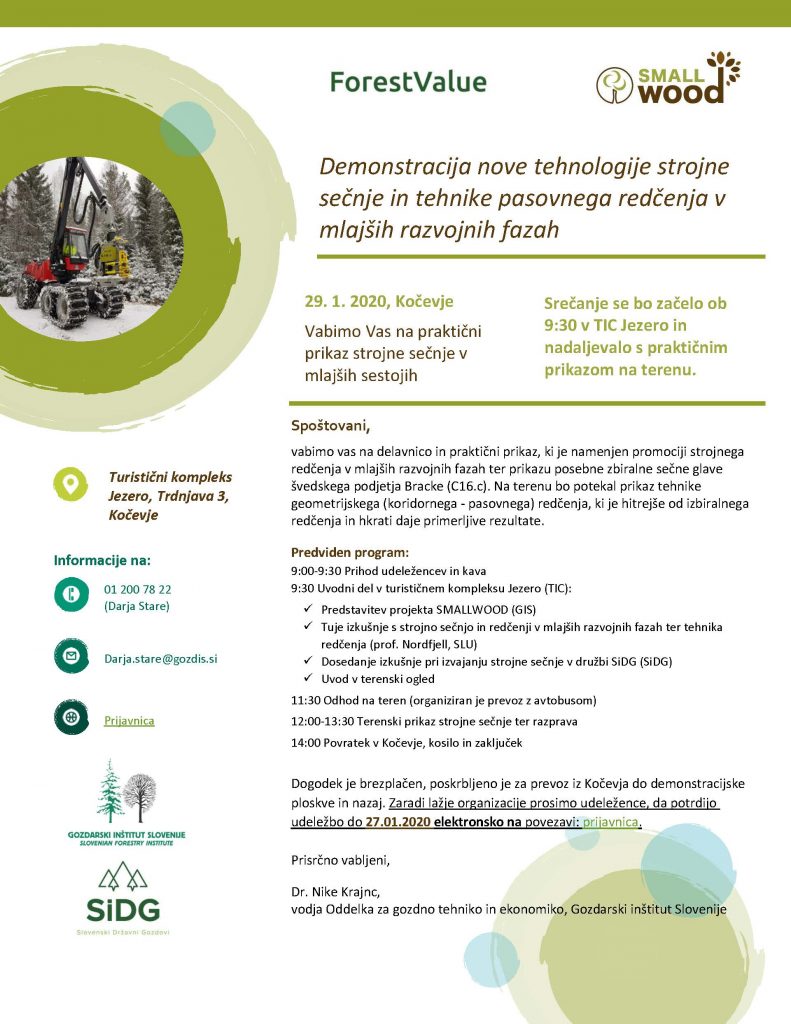Southeastern Slovenia, 29 January 2020
At the Slovenian Forestry Institute, Department for Forest Technique and Economics, in Kočevje, we successfully performed the main part of the field trials in January and February, which included time studies and ergonomic measurements of work.
The data captured in the field and further analysis will evaluate the productivity and cost-effectiveness of the technology, ergonomic workplace indicators and assess damage to the soil and trees after the timber harvest has been completed.
Field measurements were carried out in Slovenia (Kočevje) in January and February this year. Measurements were carried out to check the applicability of machine felling in case of thinning in Slovenia. The felling head was used in three different types of stands (younger small diameter beech stands, younger small diameter spruce stands and younger small diameter stands in abandoned farmland comprised of mostly hazel and birch). Same as in Sweden and Finland, the operator of the felling machine selected trees for felling.
As part of the fieldwork, on Wednesday, 29. 1. 2020, we organized a demonstration event in Kočevje, in which we demonstrated the operation of new technology in practice and the technique of corridor thinning in small diameter stand. First, we convened at a workshop at the Kočevje Tourist Information Center, where we got to know the Smallwood project itself, as well as experience with machine felling in Sweden and Slovenia. This was followed by a practical presentation of field work. Participants were able to see the machine and multi-tree felling head at the event, take a closer look and talk to the operator about his experience. In addition, participants were able to assess the condition of stands and forest floor after performed work, the intensity of thinning on individual plots, compare between selective and corridor thinning, and discuss what they saw with colleagues.
The event was attended by more than 100 participants, which proves that the thinning of the younger developmental stages of forests is a hot topic in Slovenia. Visitors mostly comprised of employees from Slovenian Forest Service, Slovenian State Forests, University of Ljubljana – Biotechnical Faculty – Department of Forestry and Renewable Forest Resources, project partners from Finland and Sweden and colleagues from Croatia.
With the purpose of presenting this exciting new technology to Slovenia, we also organized the presentation of the logging head for them. While observing the machine during work, interesting questions arose, such as the necessity of the classic tree marking and the marking of skid roads before machine logging and the large autonomy of district foresters in deciding on the technology of harvesting wood in their district. Slovenian operators also noticed the chain which even larger and more robust compared to the chains used on felling heads they use. They saw a patented solution for felling (chain mounted on a disc) that, compared to the chainsaw bar, does not twist, and there is no risk that the chain will fall off the circumferential groove. In the experience of the operator the disc needs to be replaced only approximately every year due to the fatigue of the material on the perimeter. He changes the chain when it is no longer sharp or due to operator error (such as hitting a rock), and the changeover itself takes a few minutes. During the 11 days of field trials, the combination of the machine and Bracke C16.c felling head proved to be very reliable, apart from two broken hydraulic hoses due to external damage.
In Slovenia, in the next 20 years we can expect vast areas of beech small diameter stands that will need thinning. Therefore, it is also in the interest of state forest managers to find more effective ways of ensuring forest tending.
The Smallwood (Small Diameter Wood Utilization with Innovative Stand Management for Multifunctional Forests and a Growing Sustainable Bio-economy) project was funded under the ERA-Net ForestValue program. We worked with the Slovenian State Forests Firm and the Slovenian Forest Service to plan activities and carry out the works and we thank them for their constructive cooperation.
Tina Jemec, Urban Žitko, Matevž Triplat, Mirko Baša, dr. Nike Krajnc
Presentations
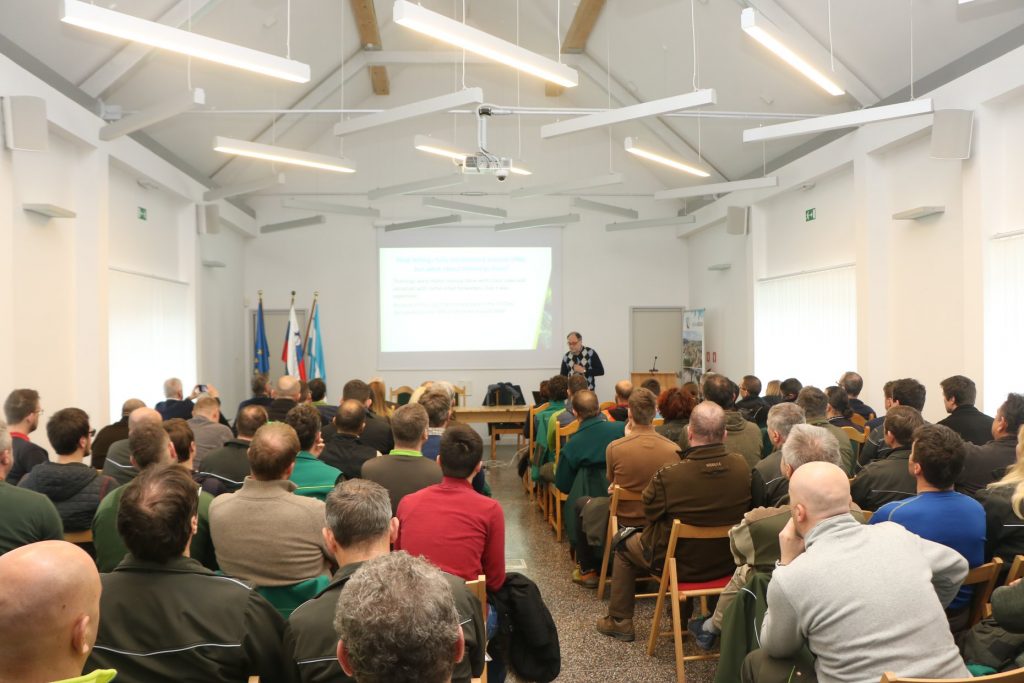
Prof. Nordfjell talking about forestry in Sweden 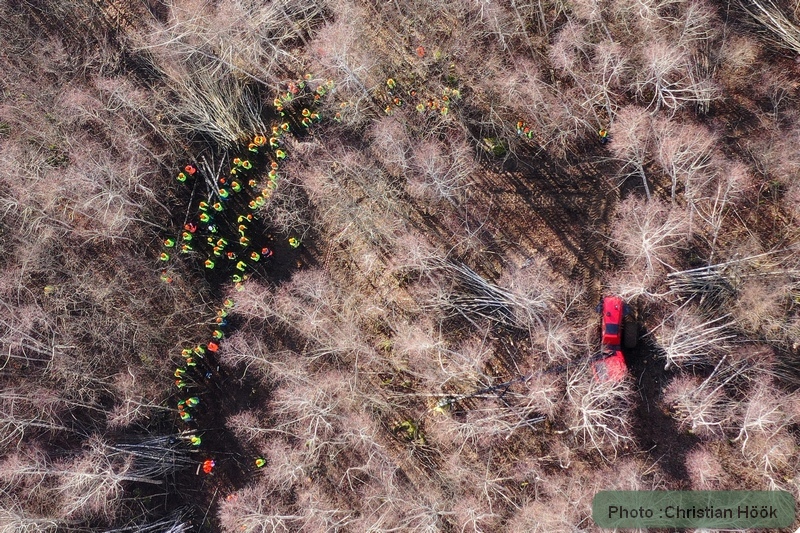
Bird’s view of the study plot during work demonstration 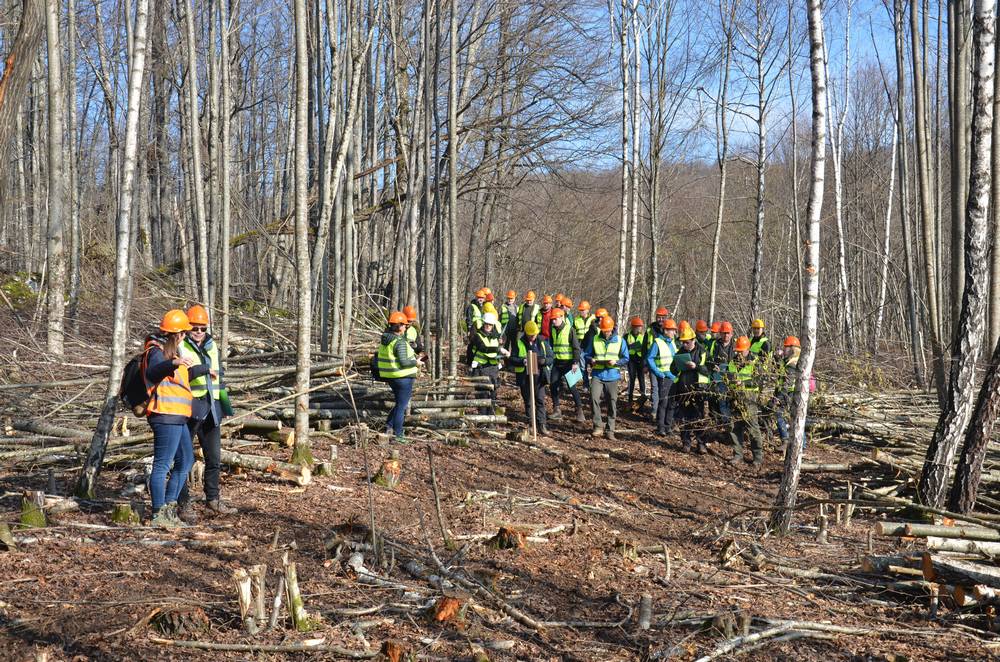
Participants viewing the study plots 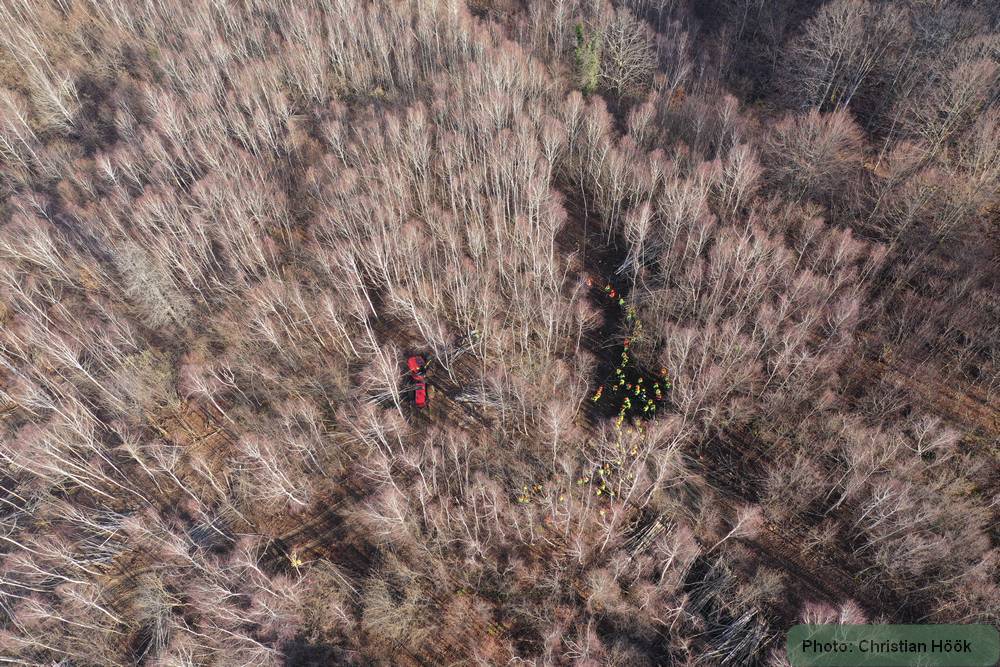
Large attendance at the practical demonstration 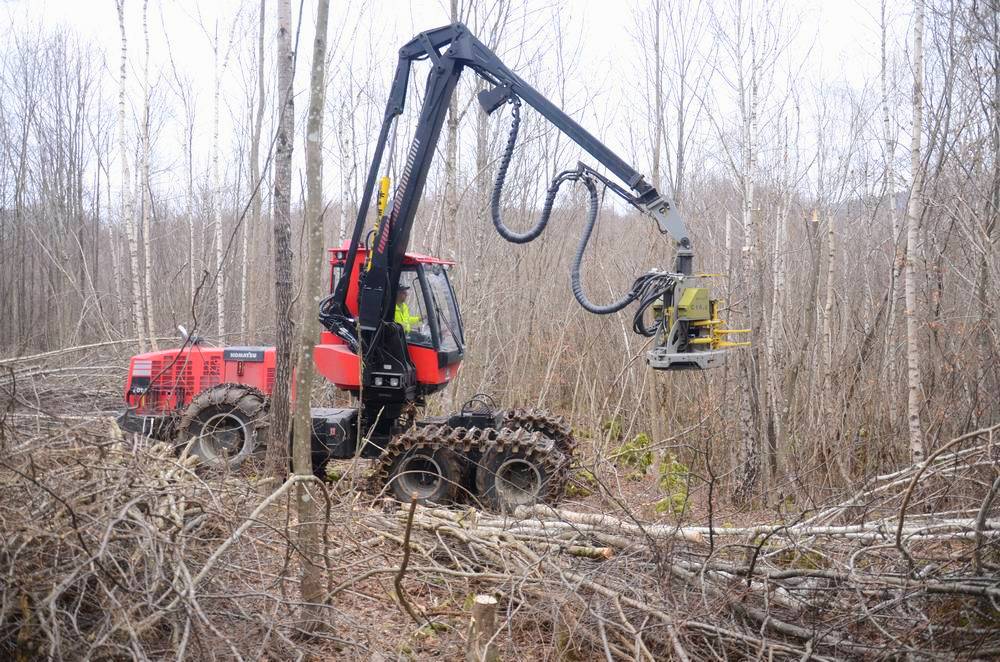
Komatsu harvester during work

